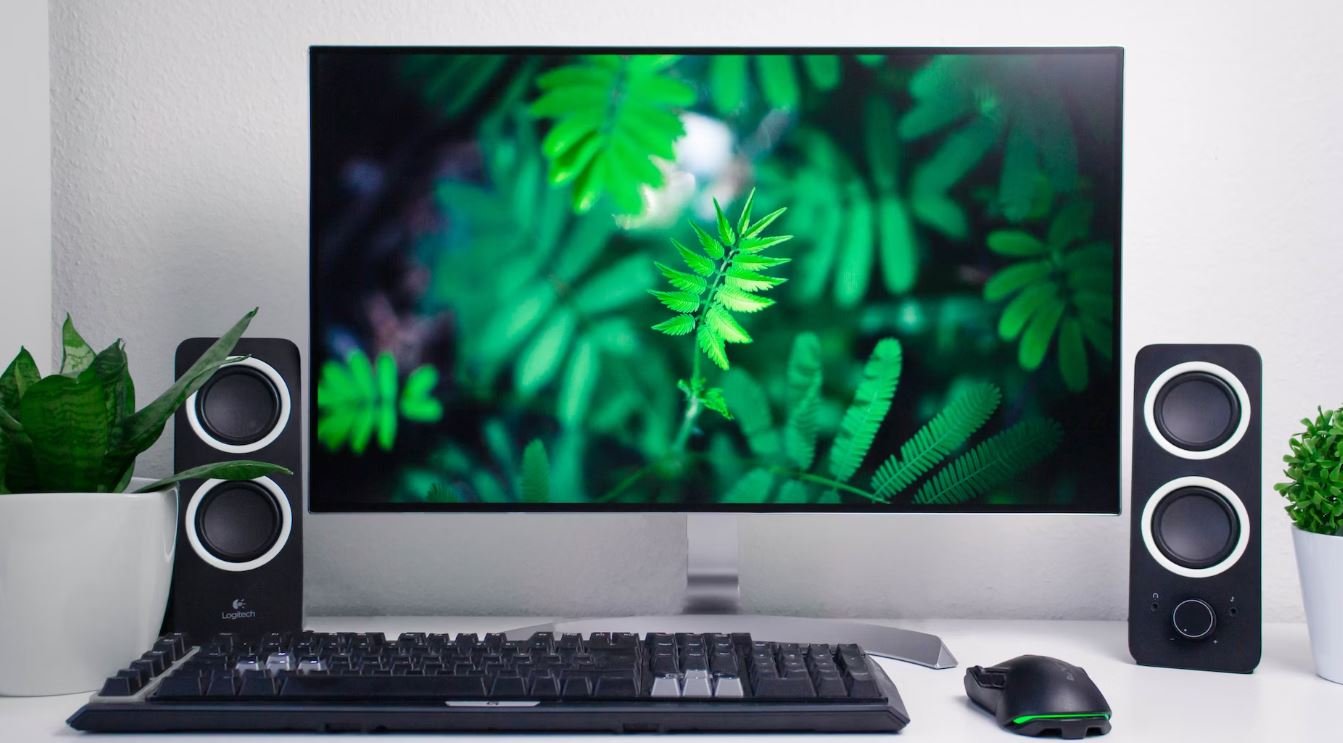Picture Prompts: Setting
Picture prompts are a fantastic tool for writers looking to spark their imagination and enhance their storytelling. They provide a visual stimulus that helps writers develop their characters, plot, and setting. In this article, we will explore the importance of setting in picture prompts and how it can influence the overall narrative.
Key Takeaways
- Setting plays a crucial role in storytelling.
- Picture prompts provide visual inspiration for writers.
- Setting can contribute to atmosphere, mood, and conflict in a story.
In literature, “setting” refers to the time and place in which a story takes place. It provides the backdrop against which the characters and events unfold. The setting can have a significant impact on the overall tone and atmosphere of a story.
*One interesting aspect of setting is its ability to act as a character itself, influencing the actions and decisions made by the story’s protagonists and antagonists.*
Let’s dive deeper into the role of setting in storytelling and how picture prompts can assist writers in developing this important element of their narrative.
The Role of Setting in Storytelling
Setting is more than just a physical location; it includes the historical, social, and cultural context in which the story unfolds. It can shape the experiences and perceptions of the characters, create conflict, and add depth to the plot.
- A well-crafted setting can transport readers to different worlds and immerse them in the story.
- Setting can create a sense of time and place, enhancing the authenticity of the narrative.
- The contrast between settings can highlight the development and growth of characters throughout the story.
*For example, a story set in a bustling city may evoke a sense of anonymity and urban isolation, while a story set in a small, close-knit community may emphasize the importance of community bonds and traditions.*
Using Picture Prompts to Develop Setting
Picture prompts can serve as a valuable tool for writers to develop the setting of their stories. By visualizing a specific scene or location, writers can better understand the dynamics of the setting and create a more vivid and immersive world for their readers.
Here are three tables demonstrating the effectiveness of picture prompts in developing setting:
| Table 1: Prompt | Setting Description |
|---|---|
| A serene mountain peak covered in snow | A remote village nestled among snowy mountains, isolated from the outside world. |
| Table 2: Prompt | Setting Description |
|---|---|
| A bustling street market in a vibrant city | A colorful and chaotic street market bustling with vendors, street performers, and a diverse crowd of people. |
| Table 3: Prompt | Setting Description |
|---|---|
| An abandoned mansion surrounded by overgrown gardens | A decrepit mansion engulfed by nature, its once-grand gardens now wild and overgrown with ivy and shrubs. |
By examining these tables, we can see how a single picture prompt can inspire detailed setting descriptions that contribute to the overall narrative.
- Picture prompts help writers imagine the specific details of a setting, such as weather, architecture, and geography.
- These prompts encourage writers to consider the history and culture that might influence the setting and its inhabitants.
- Visual cues from picture prompts can inspire conflict and tension within the setting, driving the story forward.
*Visual stimuli can unleash a writer’s creativity and allow them to create richer and more immersive settings that captivate readers.*
In conclusion, setting is a vital element in storytelling, shaping the atmosphere, mood, and conflict of a narrative. Picture prompts provide writers with a visual starting point, helping them develop detailed and engaging settings for their stories. Incorporating picture prompts into the writing process can ignite the imagination and lead to more compelling narratives. So grab a picture prompt and start crafting your setting today!

Common Misconceptions
Paragraph 1
One common misconception about picture prompts for setting is that they limit creativity. Many people believe that by restricting the visual context of a story, picture prompts hinder the imagination of the writer. However, this is not true as picture prompts can act as a catalyst to spark creative thoughts and enhance the descriptive abilities of the writer.
- Picture prompts provide a starting point for imagination to take off from.
- They allow writers to explore different aspects of a setting that they may not have considered otherwise.
- Picture prompts can inspire unique storylines that may not have emerged without a visual prompt.
Paragraph 2
Another misconception is that using picture prompts for setting restricts the writer’s interpretation of the scene. Some people believe that they are obligated to replicate the exact details in the picture, stifling their own creative vision. In reality, picture prompts can be used as a foundation to build upon and can serve as a springboard for the writer’s own interpretation of the setting.
- Picture prompts provide a framework to work within and allow for personal interpretation of the scene.
- Writers can use the picture as a starting point and then diverge and develop their own unique depiction of the setting.
- The picture can spark ideas and help writers think more deeply about the elements and atmosphere they want to convey.
Paragraph 3
A common misconception is that using picture prompts for setting leads to generic or cliché writing. Some believe that relying on visual prompts makes it easier to fall into overused descriptions and unoriginal storylines. However, picture prompts can actually help writers break away from clichés and find fresh and innovative perspectives on a setting.
- Picture prompts can challenge writers to think outside the box and come up with unique descriptions and storylines.
- They can prompt writers to explore lesser-known aspects of a setting, avoiding common stereotypes.
- Picture prompts can inspire creativity by presenting unconventional or unexpected settings and situations.
Paragraph 4
Some people mistakenly believe that picture prompts for setting are only useful for beginner writers. This misconception comes from the idea that more experienced writers don’t need visual aids and can rely solely on their imagination. However, picture prompts can benefit writers of all levels by providing inspiration and a fresh perspective.
- Picture prompts can help experienced writers overcome writer’s block and generate new ideas.
- They can serve as a source of inspiration to approach a familiar setting from a different angle.
- Even experienced writers can benefit from the visual stimulation and the challenge of translating a picture into words.
Paragraph 5
Another misconception is that picture prompts limit the scope of the story. This belief stems from the idea that a single image cannot adequately represent the complexity of a setting. However, picture prompts can be used selectively, focusing on specific elements to evoke a certain mood or atmosphere, while leaving the rest to the writer’s imagination.
- Picture prompts allow writers to create a balance between providing a visual stimulus and leaving room for imagination to fill in the gaps.
- They can help writers zoom in on important details and enhance the overall impact of a setting.
- Picture prompts can act as a starting point to ignite the reader’s imagination, enabling them to construct a vivid mental image of the setting.

Picturesque Cities in Europe
Europe is home to some of the most visually stunning cities in the world. From ancient architecture to charming canals, these cities offer a picturesque setting that captivates visitors. The following table highlights 10 European cities known for their picture-perfect scenery.
Ancient Architecture in Rome
Rome, Italy, showcases magnificent ancient architecture that transports you back in time. The table below presents the number of ancient buildings and landmarks found in the city.
| Rome | Ancient Buildings | Landmarks |
|---|---|---|
| Colosseum | 1 | ✓ |
| Pantheon | 1 | ✓ |
| Roman Forum | 1 | ✓ |
Canals of Amsterdam
Amsterdam, Netherlands, is known as the Venice of the North due to its intricate canal system. Explore the lush waterways of Amsterdam with information on the canals listed below.
| Canal | Length (km) | Bridges |
|---|---|---|
| Prinsengracht | 3.2 | 21 |
| Keizersgracht | 2.8 | 15 |
| Herengracht | 2.1 | 16 |
Medieval Charm in Bruges
Bruges, Belgium, is renowned for its beautifully preserved medieval architecture. Delve into the enchanting charm of Bruges by exploring the medieval elements listed below.
| Feature | Number |
|---|---|
| Belfry of Bruges | 1 |
| Medieval Wall | 4 km |
| Historic City Center | ✓ |
Baroque Architecture in Vienna
Vienna, Austria, is famous for its exquisite baroque architecture. Immerse yourself in the opulent world of Vienna through the baroque masterpieces presented below.
| Landmark | Architect |
|---|---|
| Belvedere Palace | Johann Lukas von Hildebrandt |
| Karlskirche | Johann Bernhard Fischer von Erlach |
| Schönbrunn Palace | Johann Bernhard Fischer von Erlach |
Stunning Cliffs of Santorini
Santorini, Greece, offers breathtaking views with its remarkable cliff landscapes. Witness the awe-inspiring cliffs of Santorini through the information provided below.
| Cliff | Height (m) |
|---|---|
| Amoudi Bay | 5 |
| Oia | 100 |
| Skaros Rock | 220 |
Exquisite Palaces in St. Petersburg
St. Petersburg, Russia, is home to grand palaces that exude opulence and beauty. Explore the exquisite palaces found in St. Petersburg with the information below.
| Palace | Architect |
|---|---|
| Winter Palace | Bartolomeo Rastrelli |
| Peterhof Palace | Domenico Trezzini |
| Catherine Palace | Bartolomeo Rastrelli |
Historical Ruins of Athens
Athens, Greece, is a treasure trove of ancient ruins that embody its rich history. Discover the intriguing ruins found in Athens through the following details.
| Ruin | Type | Age |
|---|---|---|
| Parthenon | Temple | 449 BC |
| Ancient Agora | Marketplace | 6th century BC |
| Temple of Olympian Zeus | Temple | 6th century BC |
Fairy Tale Villages of Switzerland
Switzerland is known for its fairy tale-like villages nestled in the picturesque Alpine landscapes. Immerse yourself in the enchanting Swiss villages with the information below.
| Village | Population | Elevation (m) |
|---|---|---|
| Gruyères | 2,106 | 810 |
| Appenzell | 5,821 | 780 |
| Lauterbrunnen | 2,265 | 795 |
Natural Beauty of Reykjavik
Reykjavik, Iceland, offers an array of stunning natural landscapes and geological formations. Get a glimpse of Reykjavik’s natural beauty with the details provided below.
| Landmark | Type |
|---|---|
| Gullfoss Waterfall | Waterfall |
| Blue Lagoon | Geothermal Spa |
| Snaefellsjökull | Glacier |
From the ancient architecture of Rome to the natural beauty of Reykjavik, Europe offers a vast array of picturesque cities. Whether it’s the canals of Amsterdam or the medieval charm of Bruges, these cities captivate visitors with their unique settings. Moreover, Vienna’s baroque architecture, Santorini’s stunning cliffs, St. Petersburg’s exquisite palaces, Athens’ historical ruins, Switzerland’s fairy tale villages, and Reykjavik’s natural landscapes all contribute to the visual splendor of Europe. Exploring these cities provides a captivating journey through time and scenery, leaving travelers with unforgettable memories.
Frequently Asked Questions
What is a picture prompt?
A picture prompt is an image that is used to inspire and stimulate creative thinking or writing. It serves as a visual stimulus to generate ideas, emotions, or narratives.
How can picture prompts be used?
Picture prompts can be used in various ways. They are commonly employed in educational settings to spark imagination and facilitate storytelling or writing exercises. They can also be utilized as discussion starters or as tools for artistic inspiration.
Where can I find picture prompts?
You can find picture prompts online on various websites dedicated to creative writing or educational resources. Additionally, there are numerous books, magazines, and journals that feature collections of picture prompts.
Are picture prompts only for writers?
No, picture prompts can be beneficial for anyone seeking inspiration or a creative outlet. They can be particularly helpful for visual artists, poets, storytellers, and individuals looking to explore their creative side.
How do I use a picture prompt effectively?
To use a picture prompt effectively, take time to observe the image carefully. Look for details, colors, and emotions conveyed. Let your mind wander, and allow the image to inspire your thoughts and ideas. Consider the mood or story the image evokes and use it as a starting point for your own creative expression.
Can I modify a picture prompt?
Yes, you can modify a picture prompt if you feel it will enhance your creative process. Feel free to crop, edit, or alter the image in any way that helps you connect with it or create a more personalized response.
Are picture prompts useful for teaching language or writing?
Yes, picture prompts are highly valuable in language and writing instruction. They encourage critical thinking, expand vocabulary, develop communication skills, and foster creativity. Picture prompts provide an engaging and visual way for learners to practice descriptive writing, storytelling, and generating ideas.
Can I create my own picture prompts?
Absolutely! Creating your own picture prompts can be an exciting and rewarding endeavor. You can use photographs, drawings, or images from magazines or the internet. The key is to choose visuals that captivate your imagination and inspire your creative process.
Are there any copyright restrictions when using picture prompts?
It is essential to respect copyright laws when using picture prompts. If the image is not in the public domain or licensed under a Creative Commons agreement, you should obtain permission from the original creator before using it for any purposes beyond personal use.
Can picture prompts be used in therapy or counseling?
Yes, picture prompts are frequently used in various therapeutic settings. They can assist in facilitating discussions, exploring emotions, and encouraging self-reflection. Picture prompts can be a powerful tool for therapists, counselors, and individuals pursuing personal growth or healing.




